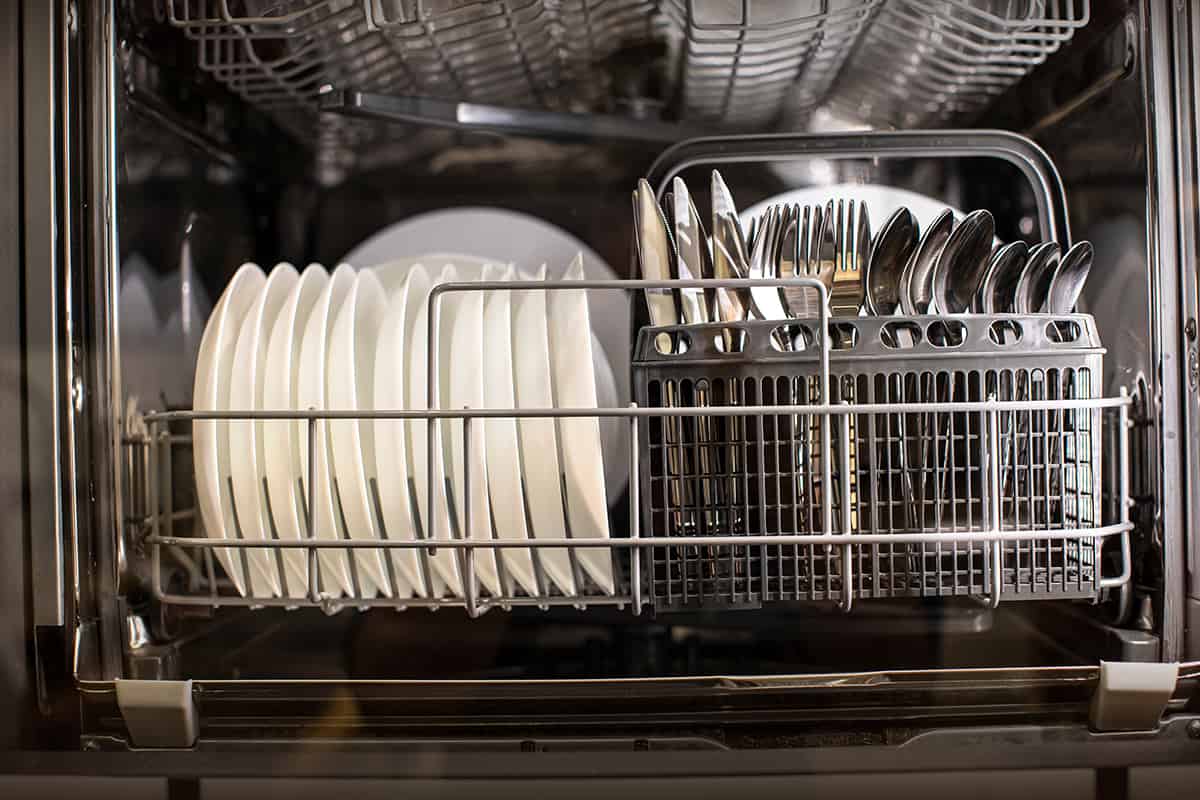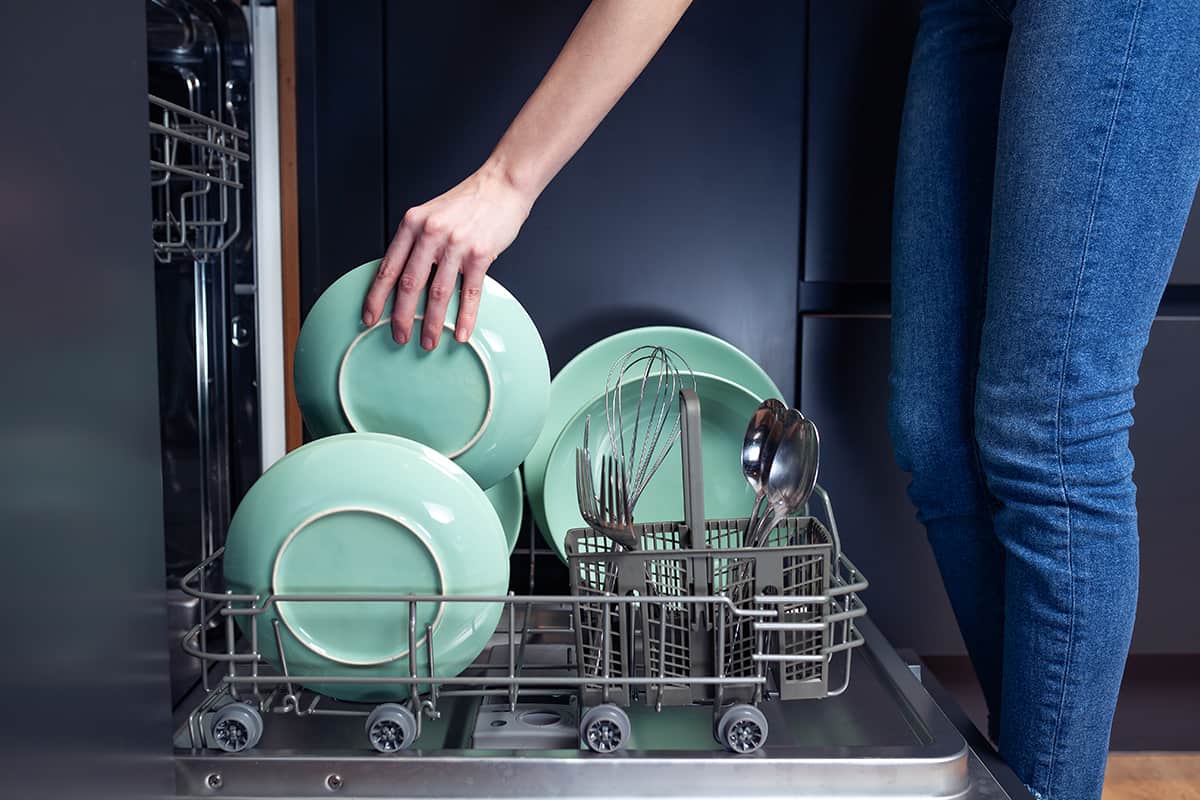While dishwashers make washing dishes a breeze, they have yet to solve one aching problem: transferring the dishes to your cabinets and cutlery drawers. While dishwasher scientists are trying to solve this issue once and for all, we will have to manually unload our dishes in the meantime. That said, is it okay to leave dishes in the dishwasher until the following morning?
Yes, it is. You can leave dishes in your dishwasher overnight or for up to 4 days inside your dishwasher. Any longer and the bacteria in your dishwasher will make your dishes dirty again.
In today’s guide, I’ll explain in more detail how long you can leave your dishes in the dishwasher, how to properly load and unload your dishwasher, and the top dishwasher mistakes you should avoid making.
Is It Ok to Leave Dishes in The Dishwasher Overnight?
Yes, it is. You can load your dishwasher with dirty dishes and wait until the following morning before running your dishwasher. Also, you can run a dishwasher at night and let your cleaned dishes sit in the dish racks before unloading the machine the next day.
How Long Can You Leave Dishes in Dishwasher?

Usually, it’s okay to leave dishes in your dishwasher for up to 4 days without touching them, regardless of whether they’re clean or not. Leaving them beyond 4 days can lead to an overgrowth of bacteria and mold in your dishwasher, which is a pain to get rid of.
With all this in mind, I highly suggest running your dishwasher as soon as it’s full and unloading the dishes as soon as they’re dry. That way, you reduce the risk of bacteria, mold, mildew, and other microscopic creepy-crawlies from overrunning your dishwasher and establishing a home base.
As long as you remove your clean dishes from the dishwasher within 4 days of washing, you won’t need to re-wash or re-rinse your dishes. Any longer, and you’ll have to put them through another wash cycle, which consumes more water and energy than you may have hoped.
Should You Rinse Dishes Before Putting Them in a Dishwasher?
No, you shouldn’t.
Modern dishwashers come with high-tech sensors that automatically adjust the amount of water and detergent used based on how filthy your dishes are. By pre-rinsing your dishes, your dishwasher may register a false reading and use less water and detergent than necessary. What you will end up with are slightly greasy dishes that will need to go through another wash cycle.
So, when loading your dishwasher with dirty dishes, just scrape off the largest bits of food debris. Load the mostly-dirty dishes in your dishwasher and turn it on when the dish racks are completely full.
How to Load and Unload a Dishwasher

When loading or unloading a dishwasher, you should always start from the bottom.
- Place pots, pans, plates, and bowls on the bottom rack.
- Lean each bowl and pot against a single tine.
- Larger items, such as stockpots and Dutch ovens, will cover multiple tines, which is fine.
- Fill the bottom dish rack with the largest items before moving to smaller items.
- When the bottom dishrack is completely full, push it in and pull the top dishrack out to load them with smaller items.
- Make sure each cup, cereal bowl, and saucer has its own individual tine.
- Fill the cutlery basket or tray.
- If you’re going to wash knives in your dishwasher, keep the handles up. As for forks and spoons, the handles should go in first.
The same bottom-up principle applies to unloading your dishwasher. That way, you can prevent water from the top dish rack’s items from soaking the stuff on the bottom dish rack. If you allowed your dishes to sit inside the dishwasher until completely dry (a few hours after the final rinse), you shouldn’t have a problem with water droplets.
How Often Should You Run a Dishwasher?
It’s typically advised that you run a dishwasher at least 5 times a week. The water from the dishwasher will keep all of the components thoroughly lubricated, reducing the risk of wear and tear over time.
On average, an inactive dishwasher will remain in optimal shape after 2 weeks of idling. Beyond the 2-week mark and you may notice cracks in the gasket, creaking noises whenever you pull the dish racks out, and odd sounds when running the machine. So, if you’re forced to leave your dishwasher for 2 weeks or more, you should get it inspected for damage upon returning home.
Top Dishwasher Mistakes to Avoid

Leaving your dishes in the dishwasher for 4 days or longer isn’t the only thing you should avoid doing. Here’s a list of common dishwasher mistakes you should avoid at all costs.
1. Neglecting the filters
The thought of sticking your hand in a dirty dishwasher and removing the debris from the filter assembly is not pretty, but it’s necessary. A clogged filter can lead to standing water, which can cause leaks and contribute to bacteria buildup. So, at least once a week, you need to remove the debris from the filter assembly and give the filter a quick wash and rinse.
2. Running the dishwasher at less than full capacity
Even if you rely on auto mode to manually measure how much water and detergent to use, the dishwasher will waste more resources (water, energy, and detergent) whenever you run it before the dish racks are fully loaded. That said, you should also avoid overloading the dishwasher, which can lead to less-than-clean dishes even after a complete wash cycle.
3. Not adding rinse aid
Does your glassware come out less-than-sparkly after a thorough wash in the dishwasher? If so, then there’s a good chance that you neglected to add a rinse aid to your dishwasher. Rinse aid creates a hydrophobic film on your dishes’ surface, allowing water droplets to slide right off. Without rinse aid, the water will eventually dry on the dishes and glassware, leaving unsightly streak marks that are a pain to get rid of.






